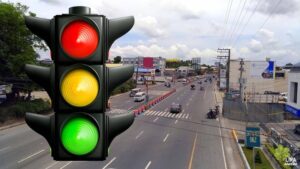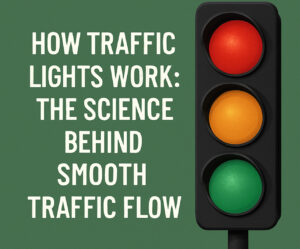Every driver has seen them: the towering, highly visible construction barrels, those iconic orange markers lining the edges of work zones. Alongside cones and signage, safety barrels play an essential role in protecting both workers and motorists. From city streets to major highways, these orange traffic barrels are more than just bright obstacles—they’re engineered safety tools that reduce accidents and save lives. Know more..
The Purpose Behind the Barrel
Unlike their smaller counterparts like cones, construction barrels are built to command attention. Standing at over three feet tall and often equipped with reflective tape and flashing lights, safety barrels are a bold visual cue for drivers to slow down, change lanes, or prepare for a work zone.
What sets orange traffic barrels apart is their size and impact resistance. While they’re lightweight enough to be moved and positioned easily, they’re also designed to withstand wind, weather, and the occasional bump from a distracted driver. The result is a physical and visual barrier that communicates caution more forcefully than almost any other traffic control device.
First Line of Defense in Work Zones
In active construction areas, especially on highways, the line between live traffic and work crews can be frighteningly thin. Construction barrels serve as a frontline defense, creating buffer zones that shield workers from vehicles moving at 60 mph or more. That buffer can be the difference between a near miss and a fatal accident.
According to traffic safety studies, the presence of safety barrels in work zones significantly reduces the speed of oncoming traffic. Drivers respond to the visual alert, even subconsciously, reducing the risk of collisions with other vehicles, equipment, or crew members.
Visibility Matters
The unmistakable orange color of orange traffic barrels isn’t just for looks. Orange is universally recognized as a warning color in road construction. When paired with reflective striping and LED lights, these barrels remain visible during rain, fog, and nighttime driving.
High visibility is critical in preventing accidents. A driver traveling at high speed needs clear, early warning of an upcoming work zone. Strategically placed construction barrels provide that advance notice, guiding vehicles into safer paths and away from hazards.
Dynamic Traffic Management
Work zones are often fluid environments, changing day by day or even hour by hour. Unlike permanent signs or barriers, safety barrels can be repositioned quickly to accommodate the day’s workflow.
This flexibility allows for dynamic traffic management. If a lane needs to close temporarily or if machinery needs access to a section of road, workers can easily move orange traffic barrels to create new routes. This adaptability keeps both the construction process efficient and the traffic flow as smooth as possible.
Reducing the Risk of Driver Confusion
One major cause of accidents in work zones is driver confusion. Unexpected detours, unclear signage, or sudden lane changes can lead to panic or indecision. Construction barrels help create clear, intuitive paths that drivers can follow without hesitation.
A continuous line of safety barrels acts like a visual guardrail. It tells the driver: “Stay here, avoid this area.” When deployed correctly, orange traffic barrels leave no room for doubt—and that clarity is key to reducing crashes.
Protecting Equipment and Infrastructure
Beyond protecting workers and drivers, construction barrels also shield valuable equipment and infrastructure. Work zones often contain heavy machinery, open trenches, and fragile installations. Safety barrels can be used to mark and defend these areas from accidental contact with passing vehicles.
By physically separating vehicles from sensitive areas, orange traffic barrels prevent costly damage and potential delays in the construction schedule.
Psychological Impact on Drivers
Interestingly, safety barrels also work on a psychological level. Their large, looming presence evokes a stronger sense of caution than smaller cones or signs. This psychological cue triggers more alert driving behavior.
When drivers see rows of construction barrels, they inherently recognize that this is a high-risk zone. The result? Slower speeds, heightened awareness, and fewer incidents.
Regulatory Standards and Placement
Government agencies have strict guidelines for orange traffic barrel usage. From spacing and placement to reflectivity and lighting, every detail is designed with safety in mind. The Manual on Uniform Traffic Control Devices (MUTCD) outlines these standards to ensure that construction barrels are deployed consistently and effectively nationwide.
Proper training is essential. Misplaced or insufficient safety barrels can lead to confusion or even increase danger. Professionals are trained to assess road conditions, traffic speed, and environmental factors when deciding how many orange traffic barrels to deploy and where.
Integration with Technology
As smart city initiatives grow, construction barrels are also getting a tech upgrade. Some modern safety barrels include GPS tracking or sensors that alert crews if a barrel is knocked over or moved. This real-time data helps crews respond faster to hazards and keep the work zone secure.
There’s even ongoing development of orange traffic barrels that can communicate with digital traffic systems, sending updates to apps and navigation software. This means drivers could receive warnings about work zones before they even see the barrels.
Cost-Effective Safety Solutions
Compared to installing temporary concrete barriers or hiring additional personnel, construction barrels are an affordable, reusable, and efficient option. Their durability means they can be used in multiple projects over years, making them a smart long-term investment.
Municipalities and contractors alike rely on safety barrels for this reason. They offer high-impact safety without the high cost.
Real-World Impact
There are countless stories of orange traffic barrels preventing tragedy. From absorbing impact in minor fender-benders to stopping drivers from veering into open trenches, these barrels are silent guardians of the road.
Many departments of transportation credit proper construction barrel deployment with reducing work zone fatalities and serious injuries. For something so simple, the impact is huge.
Conclusion: Not Just Plastic Drums
At a glance, safety barrels may just look like oversized traffic markers. But in reality, they’re one of the most effective, versatile tools available for managing work zone safety. Their high visibility, adaptability, and low cost make them indispensable.
Whether they’re guiding traffic, protecting workers, or preventing a confused driver from making a wrong turn, orange traffic barrels are a critical part of our road safety system. The next time you pass a line of construction barrels, remember—they’re doing more than blocking your lane. They’re keeping people alive.





